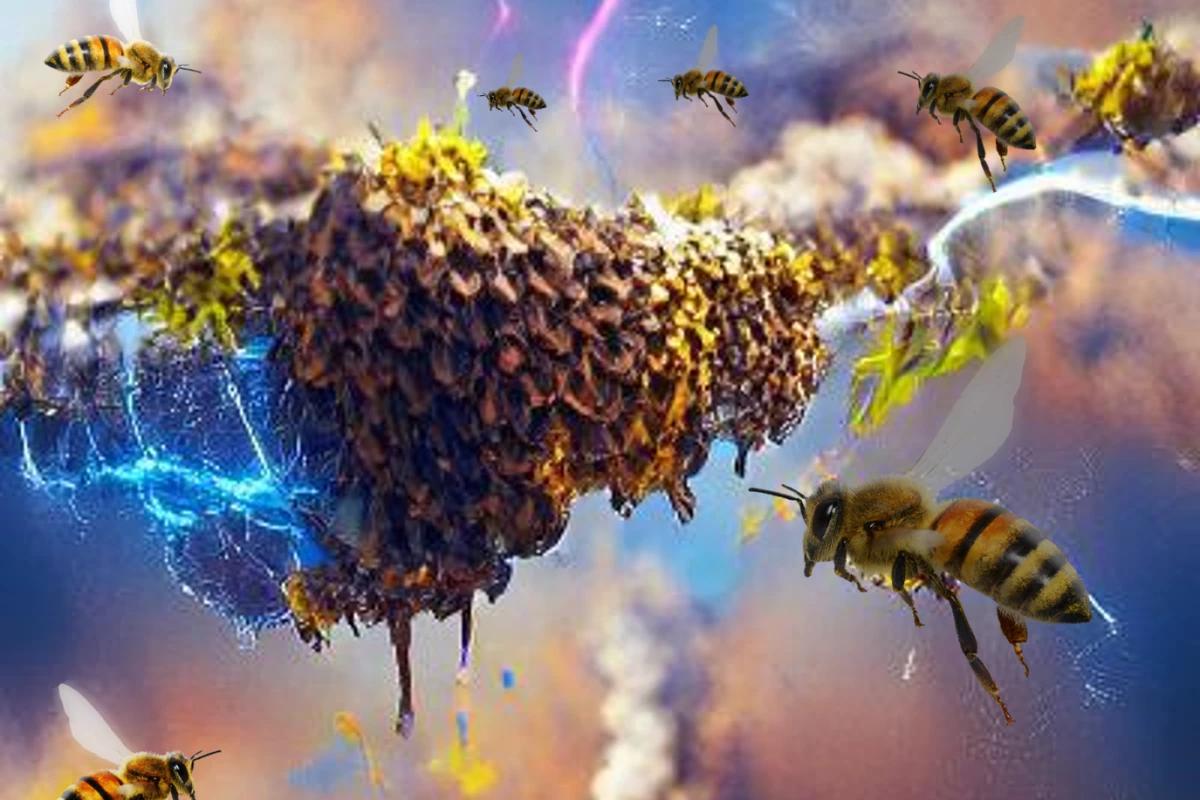Insects have been known to sense and tap into electric fields, but new research shows that swarms can actually produce atmospheric electric charges. By measuring the extent of this influence, the scientists found that large swarms could produce as much charge as a storm cloud.
Bees have a more intimate relationship with electricity than you might expect. They sense changes in electric fields to navigate to flowers. Static charges play a role in helping pollen stick to them. And they can gain an electric charge as they fly through the air. But what influence bees may have on the atmospheric electric charge hadn’t been investigated.
“We always looked at how physics influenced biology, but at some point, we realized that biology might also be influencing physics,” said Ellard Hunting, first author of the new study. “We’re interested in how different organisms use the static electric fields that are virtually everywhere in the environment.”
So, researchers at the University of Bristol and University of Reading measured the electric fields near swarming honeybees. The team placed an electric field monitor near research hives and measured changes when swarming behavior began. And sure enough, swarming honeybees raised the atmospheric electricity by between 100 and 1,000 volts per meter, depending on the density of the insects within the swarm.
From this starting point, the team then developed a model that could extrapolate the influence of other swarming insects on the atmospheric electric charge. Locusts were found to have the most substantial impact, because they can swarm at incredible, “biblical” scales. The researchers measured their charge, and combined it with records of their densities while swarming, and found that they can produce similar atmospheric electric charges as a storm cloud.
The team says that the influence of swarming insects on the atmospheric electric field is a factor that’s currently overlooked in climate and weather models. It also suggests that other organisms, like birds and microbes, might have similar effects.
The research was published in the journal iScience.
Sources: University of Bristol, Scimex




